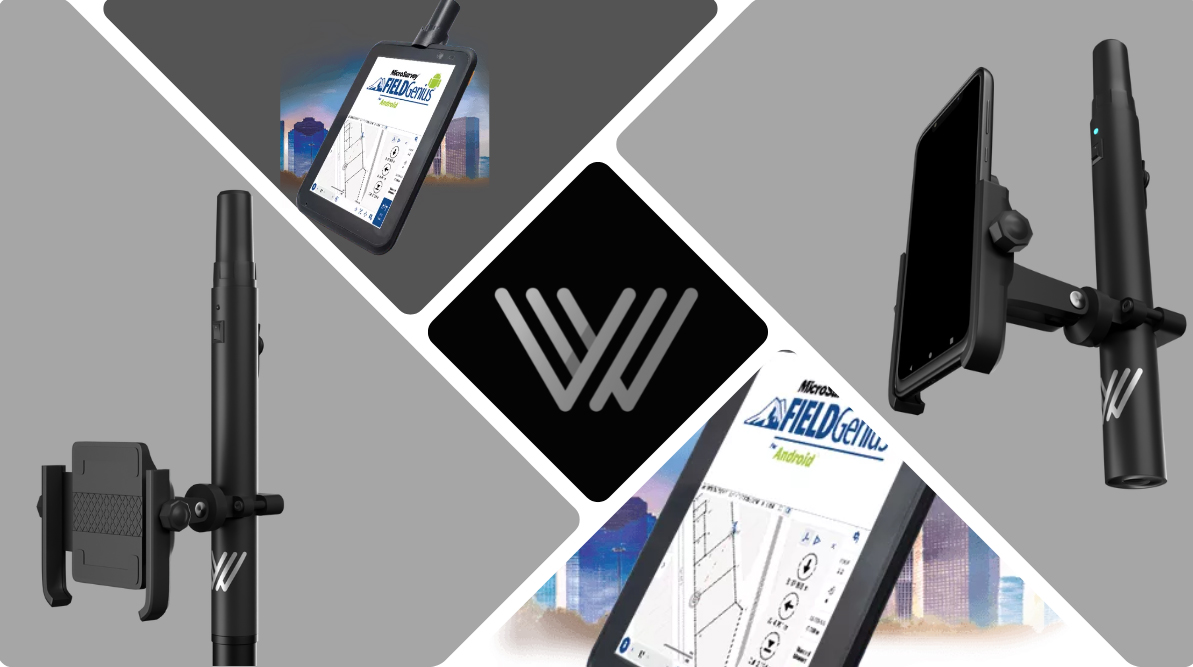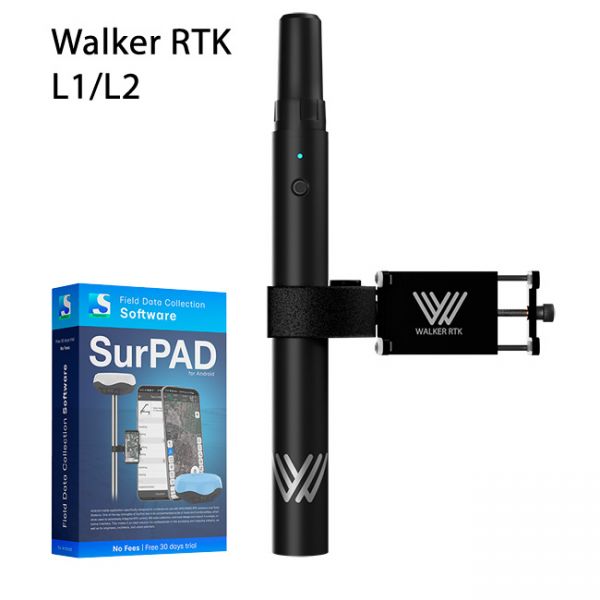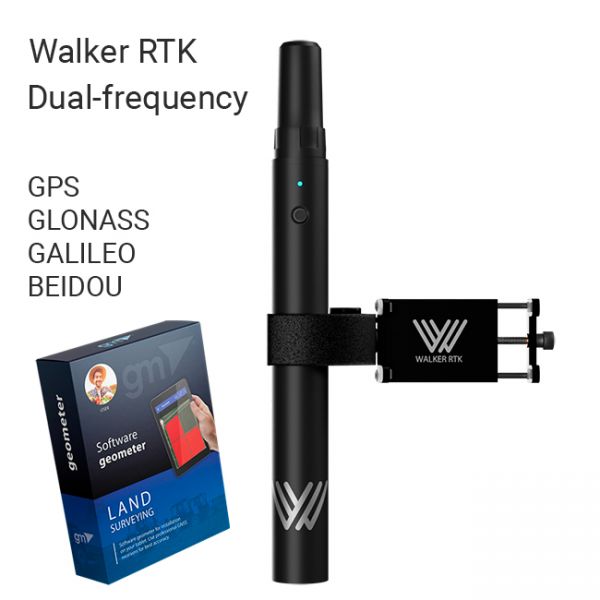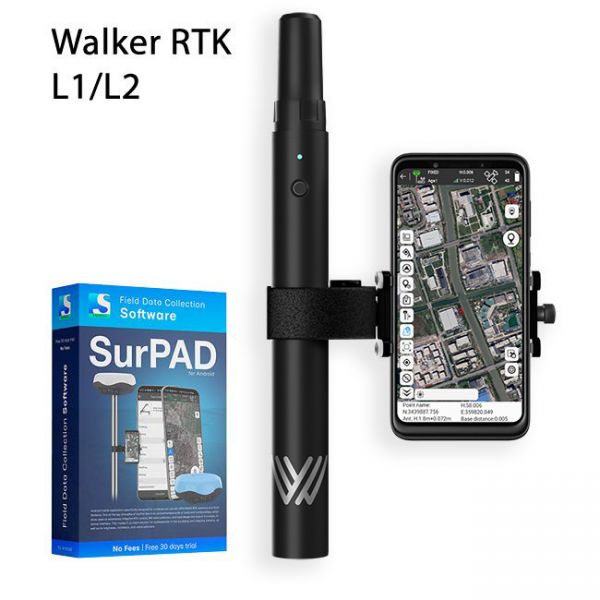
Consumer expectations for lightweight, compact, portable GNSS/RTK devices have been around for years. However, until recently, they have been held back by a lack of appropriate hardware, and use was limited to large professional devices. Today, the situation is changing significantly and the market for compact GNSS/RTK devices is now in a phase of active growth. Practical applications of portable and lightweight GNSS/RTK devices are found in a growing number of industries, even those where it was not possible before.
Portable GNSS/RTK receivers and kits - are the ideal solution for field workers doing fieldwork. The ease of use of these devices, which are controlled by a single button, can significantly lower the threshold of user requirements.
Existing types of compact receivers GNSS/RTK
Currently, the market for these devices is booming and each manufacturer offers its vision for the design of a portable RTK receiver. Some of them focus on the narrow target audience and try to make a device only for it, others develop a universal design that will most likely suit anyone interested in purchasing a compact GNSS/RTK device.
For example, company SXBlue has created their solution based on an 8-inch tablet with an RTK module and Helix antenna, which is positioned as a data collection device. This solution can be considered specialized because the RTK module is built directly into the tablet and the user is not able to replace it with, for example, a smaller smartphone or other devices. The monoblock design, combining the controller and RTK module in a single device also creates additional risks in terms of reliability. If a tablet fails, it is impossible to use the RTK without replacing it completely.
Another example of such a solution is the LT700H Rugged RTK tablet from the British company RTKF. Like the SXBlue solution, it has a monoblock tablet-based design with precision agriculture software.
Another direction is the creation of small pocket-sized RTK devices, which, indeed due to their small size, can fit into a clothing pocket. As an example of such solutions, we can take the xML2 device from the Swedish manufacturer Carlson. It is a compact device based on the Helix antenna with support for high-precision coordinate photography in RTK mode. It can integrate with any secure smartphone. A similar compact solution called Reach RX is also planned by Emlid. It is a stylish device with moisture and dust-proof housing with small dimensions.
Pocket-sized devices are lightweight, and compact, but not always convenient during work. A smartphone or tablet does not share a common mount with the receiver, which sometimes requires both hands to be engaged during operation, negating the convenience of use for "field" workers.
How is the Walker RTK solution better than the competition?
In developing the Walker RTK we focused primarily on creating a versatile device that was as "flexible" in its use as possible, suitable for both professional users and audiences with simpler tasks. The RTK receiver is a separate, independent device that integrates with any smartphone or tablet via Bluetooth or BLE without wired connections.
The Walker RTK's ergonomic housing design allows you to hold it comfortably with one hand or use standard tube holders. Failure of a tablet or smartphone does not affect the performance of the Walker RTK, you can plug in a working one and continue working.
A universal smartphone or tablet holder that attaches directly to the Walker RTK creates a one-piece design that is easy to use with one hand.
The heavy-duty aluminum alloy case with its protective coating withstands drop protection without any consequences, even on a concrete surface, which is a significant advantage over other designs of similar devices.
All in all, we can conclude that the Walker RTK is one of the most successful functional solutions in the compact GNSS/RTK devices segment that are already available on the market.
Walker RTK with professional surveying mobile application SurPAD is the ideal kit for surveying, as well as for 3D surveying manholes, sidewalks, curbs, steps, landscaping, mapping trenches, and underground utilities such as electricity, gas, water, and sewer lines
The Walker RTK with geometer mobile app is a compact and easy-to-use ideal tool for 3D surveying manholes, sidewalks, curbs, steps, landscaping, mapping trenches, and underground utilities such as electricity, gas, water, and sewer lines.
Full set of equipment Walker RTK with professional surveying mobile application SurPAD 4.2 is the ideal kit for surveying, as well as for 3D surveying manholes, sidewalks, curbs, steps, landscaping, mapping trenches, and underground utilities such as electricity, gas, water, and sewer lines






I have some questions.
- In Spain we have a network of CORS reference stations to work in RTK mode through NTRIP. The nearest reference station to my workplace is about 50 km away.
Can I connect with the Walker rtk to these cors stations?
How much maximum PPM error does it have at that distance?
- What file import and exortion format does it support, CSV, KML...etc?
- Can you work with the SW Maps application?
Thank you
Hello Isidro Carrillo Blazquez,
Thank you for contacting our company.
My name is Vitaly Gemay.
You have had several questions regarding our Walker RTK GNSS receiver:
1. We did not test the possibility of working from one base station at a distance of 50 km, since almost everywhere there is a VRS network service that creates a virtual reference station, and a long baseline is not a problem.
But I have asked my colleague to check it. I think that later we will be able to give a more specific answer.
2. Walker RTK receiver is the same as other geodetic receivers. According to the RTK standard, we add 1 cm for every 10 km of distance from the base station. Thus, at the distance of 50 km you will have an extra 5 cm of error.
3. File formats are the responsibility of the software. The receiver provides data in NMEA format via Bluetooth. We recommend using the geodetic program SurPad 4.2. More details: https://surpadapp.com/
4. Yes, you can work with any program that can work with Bluetooth receivers. The program may have a built-in NTRIP client, or you will need to configure it separately.
Please feel free to contact me if you have any questions.